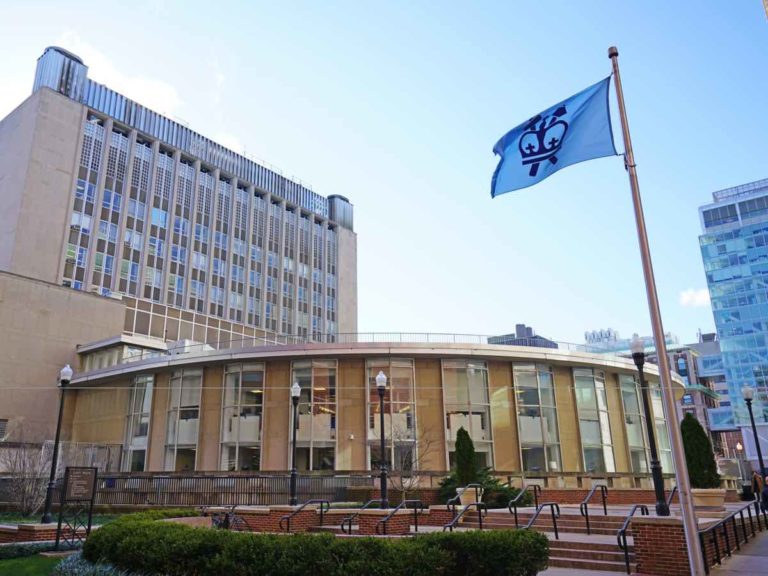What Are Good Safety Schools For Ivy League Applicants?
Ivy Leagues are some of the most prestigious colleges you can apply to in the United States; their acceptance rates almost never reach above 10-11%. Having said this, it is always prudent to have a couple of schools as back-ups just in case you don’t get accepted into an Ivy.
These schools will be your safety schools, which you know you will get accepted into. But if you are an Ivy League applicant, then what are some excellent safeties for you?
So, what are the good safety schools for Ivy League applicants? A safety for any Ivy league applicant would be to apply to your state schools. State Schools typically have an acceptance rate of 40% and over, making it neither too difficult nor too easy to get into.
If you are an Ivy league applicant, on the other hand, your application most likely looks better than a lot of other applicants (in your state school), making the chances of getting in higher.
What are the Ivy League Schools?
As aforementioned, the Ivy Leagues are some of the most prestigious in the United States. They include:
- (#1) Princeton University – 6% acceptance rate
- (#2) Harvard University – 5% acceptance rate
- (#3) Columbia University – 6% acceptance rate
- (#3) Yale University – 7% acceptance rate
- (#6) University of Pennsylvania – 8% acceptance rate
- (#12) Dartmouth College – 8% acceptance rate
- (#14) Brown University – 7% acceptance rate
- (#17) Cornell University – 11% acceptance rate
As you can see, I put the current ranking of the eight colleges to the left of the college names. Princeton, Harvard, Columbia, and Yale take the first three spots, but then we jump to #6 with UPenn, #12 with Dartmouth, and #17 with Cornell. Despite being the part of the Ivy League pact, they are not all in the top 8.
What are some Ivy League alternatives?
So if the Ivy League schools don’t come one after the other, are there more prestigious schools? The answer would be yes; the Ivy schools were formed, not because of academics, but because their sports (back in the mid-1900s) were some of the best.
There do exist many other prestigious schools that are ranked better than the Ivy Leagues and would still look just as good on a resume.
I will say though (in my opinion), the Ivy Leagues, whether they are ranked better or worse than non-Ivies, will be looked at slightly differently. It may just be me, but it sometimes feels as if the Ivy League schools are at the top, and then schools like Stanford and Duke come after them (even though they are ranked better than some of the Ivies).

It might just be the pressure at my school to get into an Ivy, idk. Anyways we’re getting off-topic.
Here is a list of other top tier schools (as of 2020):
- (#3) Massachusetts Institute of Tech. (MIT) – 7% acceptance rate
- (#6) Stanford University – 4% acceptance rate
- (#6) UChicago – 6% acceptance rate
- (#9) Northwestern University – 9% acceptance rate
- (#10) Duke University – 8% acceptance rate
- (#10) Johns Hopkins University – 7% acceptance rate
- (#12) California Institute of Tech. (CalTech) – 6% acceptance rate
- (#15) University of Notre Dame – 15% acceptance rate
I’ve listed eight other schools, and all but one of the schools are either tied with or are ranked higher than an Ivy.
Basically, what I’m trying to say is that the safety schools that I’m going to mention apply to more than just the eight privates we’ve come to know as the Ivies.
What are safety schools?
Have you heard of the 3-3-3 strategy when applying to college?
What you do is apply to 3 schools you are almost certain you will get into (safety schools), 3 schools that you have a slightly higher chance of getting into rather than getting rejected from (target school), and 3 schools that you are most likely to get rejected from than accepted into (reach school).
There may be slightly different variations of this strategy, but that is the way I understood it. Our focus will be the three schools that you are almost certain you will get into (your safeties).
Almost every high school student applying to college will apply to a safety school. As I said, safety schools are not only common to apply to but almost necessary.
It’s good to be optimistic about Stanford or Duke, which could be your dream schools, but do not get to the point where you feel like you don’t need safeties.
Are state schools considered safeties?
I personally think that for Ivy league/top college applicants, state schools (and when I refer to state schools, I mean public schools with 40-60% acceptance rates) are on the border between your “schools you are almost certain you will get into” and “schools that you have a slightly higher chance of getting into rather than getting rejected from”.
If you are applying to a top tier college, you must have something to your application that makes you a cut above the rest. Whether it’s a high GPA or stellar extracurriculars, you must have something.
Some state schools such as the University of Maryland – College Park (UMD) and Pennsylvania State University (Penn State) have an honors program.
These honors programs are harder to get into than if you were applying to the regular school. I’m not sure for other schools, but I know the UMD honors program, or just UMD in general, is where a lot of top school applicants apply (whether they live in MD or not).
It’s sort of like the place for people who had the potential for going to a top tier school, but either were rejected or didn’t receive the financial aid to afford a top tier school.
Disclaimer: UMD and Penn State, with acceptance rates of 47% and 56% are not easy colleges to get into by any means, and just because you are applying to Duke or Northwestern, that doesn’t mean you will get into these schools for sure. And these schools are considered safety or target schools for different students. However, as a top tier applicant, these schools may be closer to safety than a target.
How many safeties should I have?
The answer to this will vary from person to person because there is no correct answer. We’ve already established that you need a safety, but you don’t want to go overboard and apply to 5; that would be a waste of money, and there’s no point.
I think about 2-3 safety schools should be enough; that way, you aren’t applying to too many schools, but you are also giving yourself options.
Remember, safety schools, in general, have about 70-90% acceptance rates, but for a top school applicant, you can count a school such as Penn State (56% acceptance rate as of 2020) as a school on the border between a target school and safety school.
As an Ivy League or any top school applicant, your idea of a safety school will vary, but your state school is probably a good option.
Certain states such as Pennsylvania, Maryland, and California will have better-ranking schools than others, but most states should have a relatively good safety school.
Regardless of the acceptance rate, make sure the safety school/schools (2-3 is a good number of safeties) you apply to are schools you are certain you will get accepted into (that’s the point of them anyway).
Disclaimer: The views and opinions expressed in this article are those of the authors and do not necessarily represent those of the College Reality Check.





